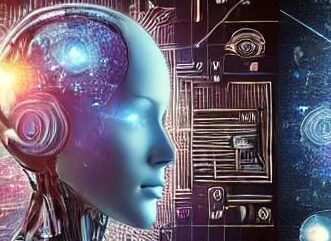AI as a Catalyst for Change
As the world grapples with complex challenges such as climate change, healthcare crises, and resource scarcity, Artificial Intelligence (AI) emerges as a powerful tool to drive solutions. AI’s ability to analyze vast amounts of data, predict outcomes, and optimize processes positions it as a key player in addressing global issues.
In this installment of the AI Terminologies Series, we’ll explore how AI is being applied to solve pressing global problems and the potential it holds for creating a sustainable and equitable future.
1. Fighting Climate Change with AI
AI’s Role:
AI is revolutionizing how we monitor and combat climate change, enabling proactive solutions.
Applications:
- Weather Prediction: AI models forecast extreme weather events to improve disaster preparedness.
- Carbon Tracking: AI-powered systems monitor emissions and suggest reduction strategies.
- Renewable Energy Optimization: AI predicts energy outputs from solar and wind farms, ensuring efficient integration into power grids.
Example:
Microsoft’s AI for Earth initiative supports projects like mapping deforestation and improving climate modeling.
2. Revolutionizing Healthcare
AI’s Role:
From diagnostics to drug development, AI is transforming the healthcare landscape.
Applications:
- Disease Detection: AI identifies diseases like cancer and Alzheimer’s in early stages through image analysis.
- Drug Discovery: AI accelerates the identification of potential drug candidates, reducing development time.
- Telemedicine: AI chatbots provide basic consultations and triage, improving access to care.
Example:
DeepMind’s AlphaFold solved the 50-year-old challenge of protein folding, paving the way for new drug discoveries.
3. Advancing Education Accessibility
AI’s Role:
AI is making education more inclusive and personalized, addressing global disparities in learning opportunities.
Applications:
- Adaptive Learning Platforms: AI customizes lessons based on individual progress and learning styles.
- Language Translation: AI tools break down language barriers, enabling access to global resources.
- Teacher Support: AI automates administrative tasks, allowing educators to focus on teaching.
Example:
Khan Academy uses AI to tailor lessons and provide instant feedback to learners worldwide.
4. Combating Poverty and Hunger
AI’s Role:
AI supports global efforts to eradicate poverty and hunger by optimizing resource allocation and improving agricultural practices.
Applications:
- Precision Agriculture: AI drones monitor crops, detect pests, and optimize irrigation.
- Food Distribution: AI analyzes supply chain data to reduce food waste and improve distribution efficiency.
- Economic Empowerment: AI-powered tools provide financial insights to small-scale farmers and entrepreneurs.
Example:
FAO and Google collaborate on AI projects to monitor agricultural trends and combat food insecurity.
5. Preserving Biodiversity
AI’s Role:
AI aids in monitoring and protecting wildlife and ecosystems under threat from human activities and climate change.
Applications:
- Wildlife Tracking: AI analyzes camera trap images to monitor animal populations.
- Anti-Poaching Efforts: AI-powered drones detect illegal activities in protected areas.
- Ecosystem Modeling: AI predicts the impact of environmental changes on biodiversity.
Example:
WWF uses AI to analyze camera trap data, identifying poaching hotspots and tracking endangered species.
6. Addressing Urban Challenges
AI’s Role:
AI helps build smarter, more sustainable cities by addressing challenges like traffic congestion, waste management, and energy use.
Applications:
- Traffic Management: AI optimizes traffic lights and predicts congestion patterns.
- Waste Sorting: AI robots identify and sort recyclable materials.
- Energy Efficiency: AI systems reduce energy consumption in buildings.
Example:
Singapore uses AI-powered traffic systems to reduce congestion and improve urban mobility.
7. Enhancing Disaster Response
AI’s Role:
AI improves disaster response by predicting, preparing for, and mitigating the impact of natural disasters.
Applications:
- Earthquake Prediction: AI analyzes seismic data to predict earthquakes and minimize damage.
- Flood Mapping: AI creates real-time maps to guide evacuation efforts.
- Relief Coordination: AI platforms optimize resource distribution during crises.
Example:
Google’s Flood Forecasting Initiative uses AI to predict floods and alert communities in advance.
8. Promoting Social Justice and Equality
AI’s Role:
AI is empowering marginalized communities and promoting fairness in societal systems.
Applications:
- Bias Detection: AI audits algorithms for fairness in hiring, lending, and law enforcement.
- Access to Justice: AI legal assistants provide affordable legal advice.
- Digital Inclusion: AI-driven language tools ensure digital resources are accessible in underserved regions.
Example:
UNICEF uses AI to monitor social inequities and improve access to education and healthcare.
Challenges in Using AI for Global Good
- Data Bias:
- Skewed datasets can perpetuate inequalities.
- Solution: Use diverse and representative data sources.
- Resource Availability:
- AI projects often require significant computing power.
- Solution: Promote the use of energy-efficient AI models.
- Ethical Concerns:
- Misuse of AI can harm vulnerable populations.
- Solution: Develop strong regulatory frameworks for ethical AI usage.
How You Can Contribute to AI for Global Good
- Join Impact-Focused AI Initiatives:
- Collaborate with organizations like AI for Earth or DataKind.
- Build AI Projects for Social Good:
- Create models that address local challenges, such as waste management or water conservation.
- Advocate for Responsible AI:
- Promote transparency, fairness, and accountability in AI projects.
- Educate and Empower:
- Share AI knowledge to inspire more people to work on impactful solutions.
Conclusion: AI as a Force for Positive Change
AI has the potential to address some of humanity’s most pressing challenges. By leveraging its capabilities responsibly, we can create a future where technology not only drives progress but also fosters equity, sustainability, and resilience.
Stay tuned to Explore AIQ as we continue to explore the limitless possibilities of AI and its role in creating a better world.




